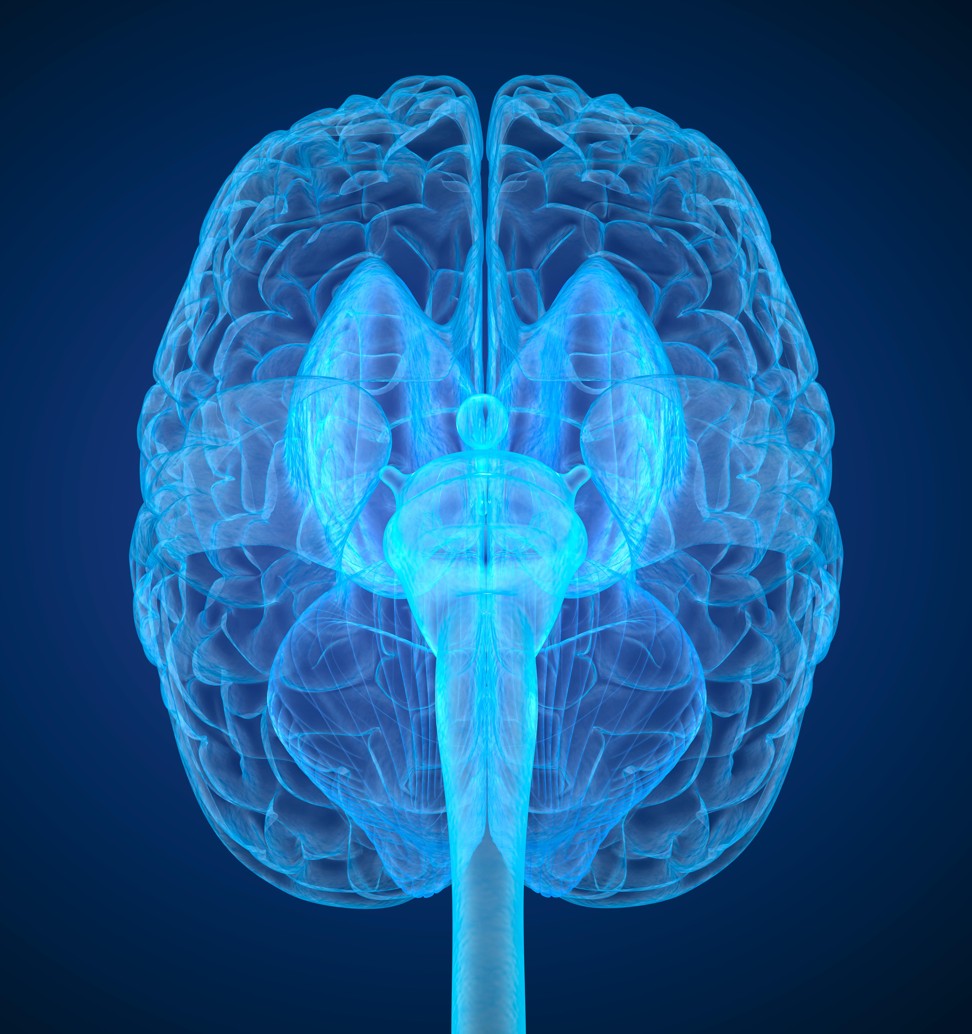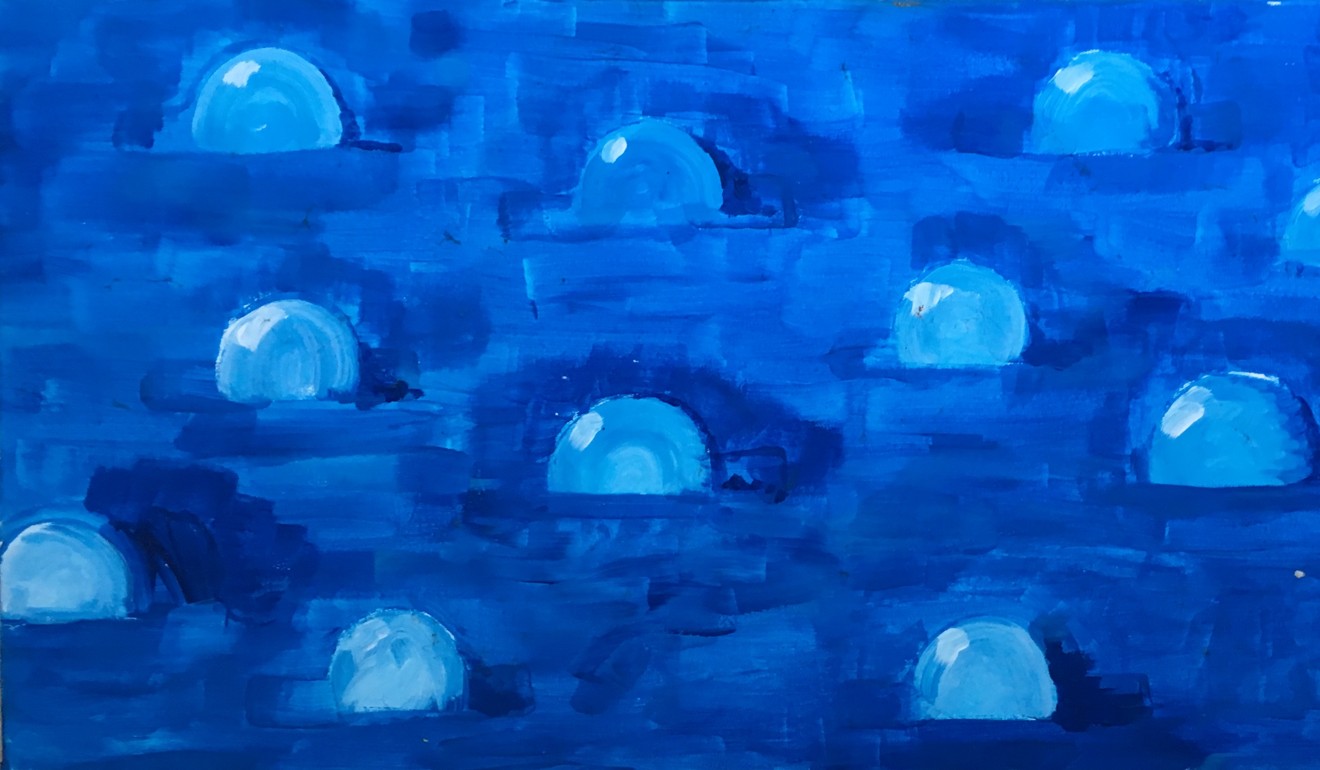
What’s sex like when you can feel colours and taste sounds? For people with synaesthesia, the world can appear very different
People with synaesthesia experience a blending of the senses that might make flowers sound like bells or the word ‘Tuesday’ feel dark blue. When it comes to sex and orgasm, the experiences can be dramatic
If romantic films are to be believed, kissing someone special can leave you seeing fireworks. For 38-year-old Sariah of California, it’s closer to seeing the Northern Lights.
What she experiences during intimate moments is “like smoke swirls in blues and purples and brilliant orange-pinks or brass-greens, with sparkling lights like fireflies that swirl in vibrant, glowing colours … and truth be told I don’t know where orgasm comes in because if I’ve reached this state, I can’t tell any more. Tasting, hearing, touching, smelling, breathing, feeling, all become one sense. And it’s all beautiful.”
Five reasons why sex is good for you: health benefits behind the fun
Sariah (who asked that we not reveal her surname) has had “synaesthesia” all her life, though it wasn’t until recently that she learned what it was called.
People with synaesthesia, or synaesthetes, experience a kind of blending of the senses.
When one sense is triggered, another aspect of it, or another sense entirely, is also activated. For example, seeing a square might invoke the taste of licorice, or listening to Jimi Hendrix’s song Purple Haze might actually make you see bright pink and green zigzags.
Synaesthesia is thought to occur in around 4 per cent of people. Sixty-eight per cent of those people have the most common type, grapheme-colour synaesthesia (which links letters or numbers with colours), sometimes in addition to other kinds.

Even the same types of synaesthesia manifest differently between people. For example, “Tuesday” might always appear as (or “feel”) dark blue to one synaesthete but burnt orange to another. For each individual, however, the sensation is always the same.
Sariah has multiple kinds of synaesthesia. These include mirror-touch synaesthesia (which involves feeling what is being physically experienced by someone else); auditory-tactile synaesthesia (being able to feel sounds), which she has had since birth; and sexual synaesthesia, where the senses blend during intimacy.
“I’ve been able to hear the colour I see – and that’s a lot of sound when you’re driving down the highway at 55mph looking across the landscape as it shifts in wind and light,” Sariah says.
“Roads and buildings are monotone because they aren’t alive … flowers sound like a zillion bells. Humming birds sound like an army of trumpets. Each flower, bird or person is its own song … but too many colours and sounds overlap in view for me to nail down a tone or note for each.”

Her mirror-touch synaesthesia in particular makes her highly sensitive. She struggles to understand how anyone could ever be cruel to others but feels “blessed to have had a relatively sheltered childhood”.
There have been few scientific studies on sexual synaesthesia.
One paper from 2013 suggests orgasms can bring on coloured visions for 2.15 per cent of synaesthetes.
However, it’s not all about the “big O” – experiences such as kissing, touching and caressing can also lead to seeing colours and shapes, or invoke textures and tastes.
The lead author of that paper, Dr Markus Zedler of the Hannover Medical School in Germany, began studying synaesthesia in the late 1990s.
Synaesthesia is something very healthy. Less than 1 per cent of synaesthetes come to the specialist talking about being overwhelmed by their senses
He says he has probably met more than a thousand synaesthetes during his career, and it seemed to be a common phenomenon to “feel” an orgasm with other senses including sight, hearing and smell.
While a synaesthete’s experiences aren’t something that can be controlled or consciously brought on, Zedler says they aren’t a sign of something wrong.
“Synaesthesia [experiences] are no hallucinations … synaesthesia is something very healthy. Less than 1 per cent of synaesthetes come to the specialist talking about being overwhelmed by their senses. On the other hand, non-synaesthetic symptoms like hallucinations are clearly different. During psychosis you find hallucinations like voice-hearing. Especially harming are [the] voices who tell you what you have to do,” Zedler says
“Another kind of non-synaesthetic pseudo-hallucinations could be flashbacks regarding trauma. But synaesthetic experiences during sex are normal and, in most cases, well known by the synaesthetes.”
The things many Hongkongers don’t seem to understand about sex
He advises, however, that if you have never experienced synaesthesia and suddenly start seeing things like insects and monsters, or hear voices, it is worth seeking medical advice.
What can we learn from blended senses?
Many years ago, synaesthesia was dismissed as an over-active imagination, but scientists around the world are now studying many aspects of the phenomenon for the benefit of synaesthetes and non-synaesthetes alike.
While it is not clear how synaesthesia develops, it could help us better understand how our brains process incoming sensory information, improve our memories, and gain a better understanding of consciousness, among other things.

There are several theories for how synaesthesia arises, Zedler says. “[The] main understanding is that synaesthesia is one case of a hyperconnected brain.” This means there are more connections between sensory regions of the brain that would usually have minimal communication.
It has been suggested that all humans are born with the kinds of brain connections that allow mixing of the senses, but many of us lose this level of connectivity as we grow older.
The sex [with my current girlfriend] is amazing, and with her, orgasms are always [a] bright ‘blood red’ flash
And while it is likely to have a genetic basis since it often runs in families, synaesthesia can also be brought on suddenly – by brain injury, drug exposure or (to a limited degree) by training.
While Sariah sees the colours in her field of vision, for Kane Allen, 35, of Perth in Australia, it is more a case of seeing the colours in his mind’s eye.
“They just look that colour. Or more to the point, they feel that colour. I guess I say it’s not in my field of vision because it’s not as though their face or hair or skin is a shade of their colour, they just are that colour,” he says.
“My current girlfriend and I have an awesome relationship, we have always had a deep connection … we knew this the first time we ever spoke, before we even saw each other. I knew then she was a blood red colour. As I got to know her it evolved into a red with a fluctuating black ‘edge’ to it. The red could be bright to almost black it is so dark. The sex is amazing, and with her, orgasms are always [a] bright ‘blood red’ flash. They always go from deep, dark red to a bright red.
“With her it is nothing like what I have ever seen with anyone else. Sometimes it is so bright and all-consuming it almost makes me kind of black out it feels so intense. Or in her case, ‘red out’, since orgasms are red with her.”
Six tips on maintaining a happy marriage – yes, good sex is one
Allen says he hadn’t tried explaining his experiences to anyone else until his current partner – he assumed everyone else saw something similar.
“My current partner knows, and finds it quite intriguing to be honest, and I think it has been good for us and our relationship. I have explained to her that I believe the intensity and brightness of what I see is linked to how much I am enjoying it, and is a mix of both the physical and emotional pleasure experienced with her,” he says.
“She was the person who first realised that it was called synaesthesia, and others experienced it too.”
Sariah says she sees her sexual synaesthesia as a kind of “gift”, but not something to seek out for pleasure’s sake.
“I think what I see visually with my eyes … during intimacy is a perfect harmonic resonance between two people. I think it’s exceptionally rare, special, even sacred.
“Personal, spiritual, emotional intimacy and pure, unselfish love with a close partner makes the difference … in my experience.”
